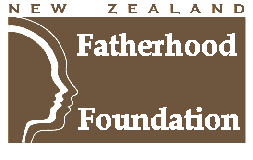Fact Sheet #1: Childrearing patterns
For official statistics:
"A family nucleus consists of two or more persons who are members of the same household, and who comprise either a couple, at least one parent role/child relationship, or both."
"A household is either one person who usually resides alone
or two or more persons who usually reside together and share facilities
(such as eating facilities, cooking facilities, bathroom and toilet
facilities, a living area)."
(Statistics New Zealand)
Groupings are based on where people live, with the relationship to others being secondary. Hence in official statistics (such as the Census of Population and Dwellings and the Time Use Survey) non-custodial parents are not considered part of the family, and live-in partners or step-parents are assumed to be parents to any children in the household.
These definitional problems need to be kept in mind when looking at the following official statistics for 1996:
76.4% of children under 15 lived in a two-parent family. There was little variation by age of child, although younger Maori and Pacific Island children were more likely than older children to live in sole parent families, whereas there was a slightly higher proportion of older European children living in sole parent families.
189,000 children under 15 were living in sole parent families and 613,900 children in two parent families (not necessarily with both natural parents).
41.2% of Maori children lived in sole parent families; 29.0% of Pacific Island children; 12.2% of Asian children; and 16.6% of European children.
86.5% of children in sole parent families lived with their mother. Boys and older children were more likely to live with their father, including 1 in 5 of the boys aged 10-14 years.
33.3% of children from sole parent families lived in households with people who did not belong to their immediate family.
13.5 % of children in a two-parent family had their parents living in a defacto union rather than a marriage. Again there were some important ethnic differences. 9.9% of European children having their parents in a defacto union, for Maori the figure was 30.4%, for Pacific Island children 12.8% and for Asian children 2.7%.
These data show family arrangements at one point in time. Canadian research has found that just under 90% of all Canadian men will become fathers. Of those becoming fathers for the first time, over 90% will do so initially within an intact two-parent family.
Nearly 80% of these fathers will remain in this family arrangement until their children leave home. So only two-thirds of men will be in an intact two-parent family with their own children across their potential parenting lifecycle. The research also suggests that many sole-parent families become two-parent families through repartnering, and a significant number of children will be part of sole-parent families for at least some of their childhood.
Sources:
Juby, H. and Le Bourdais, C. (1998) The changing context of fatherhood in Canada:
A life course analysis, Population Studies, 52: 163-175.
Statistics New Zealand (1998) New Zealand Now: Children, Wellington: Statistics New Zealand
